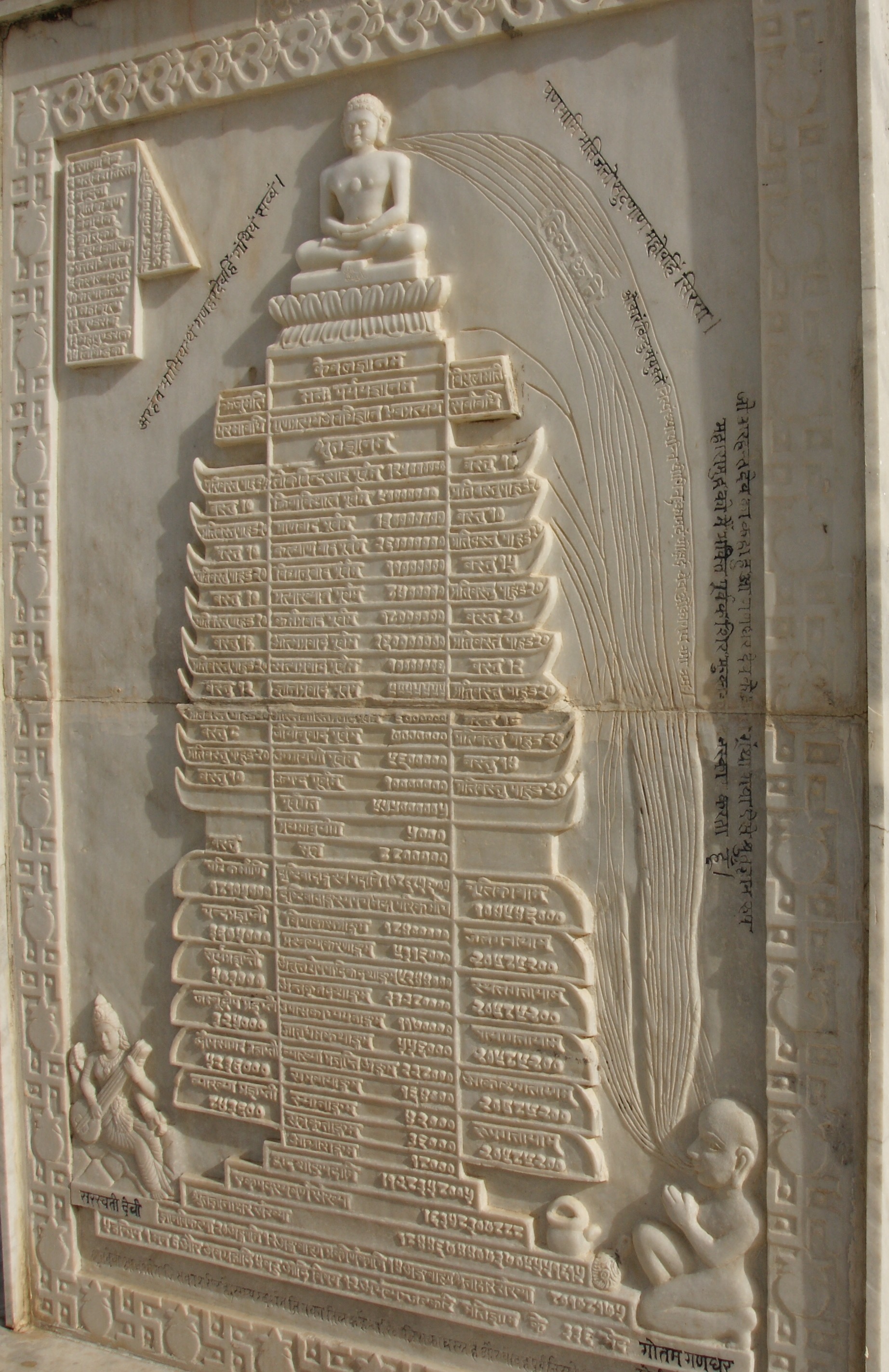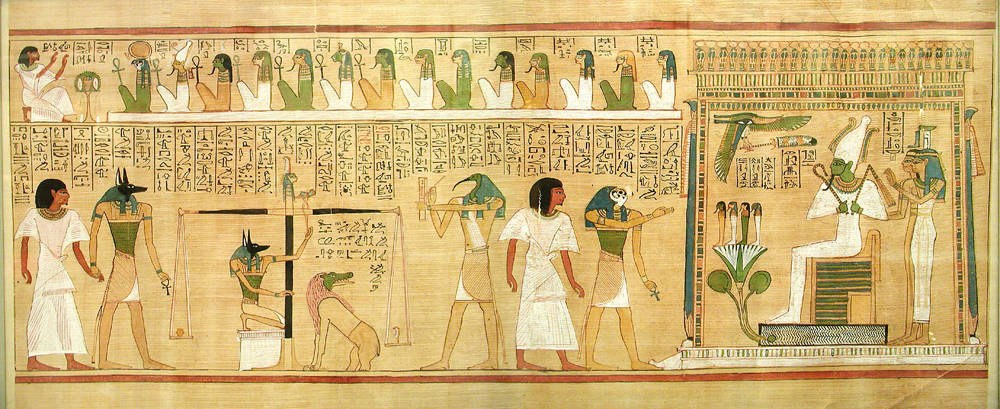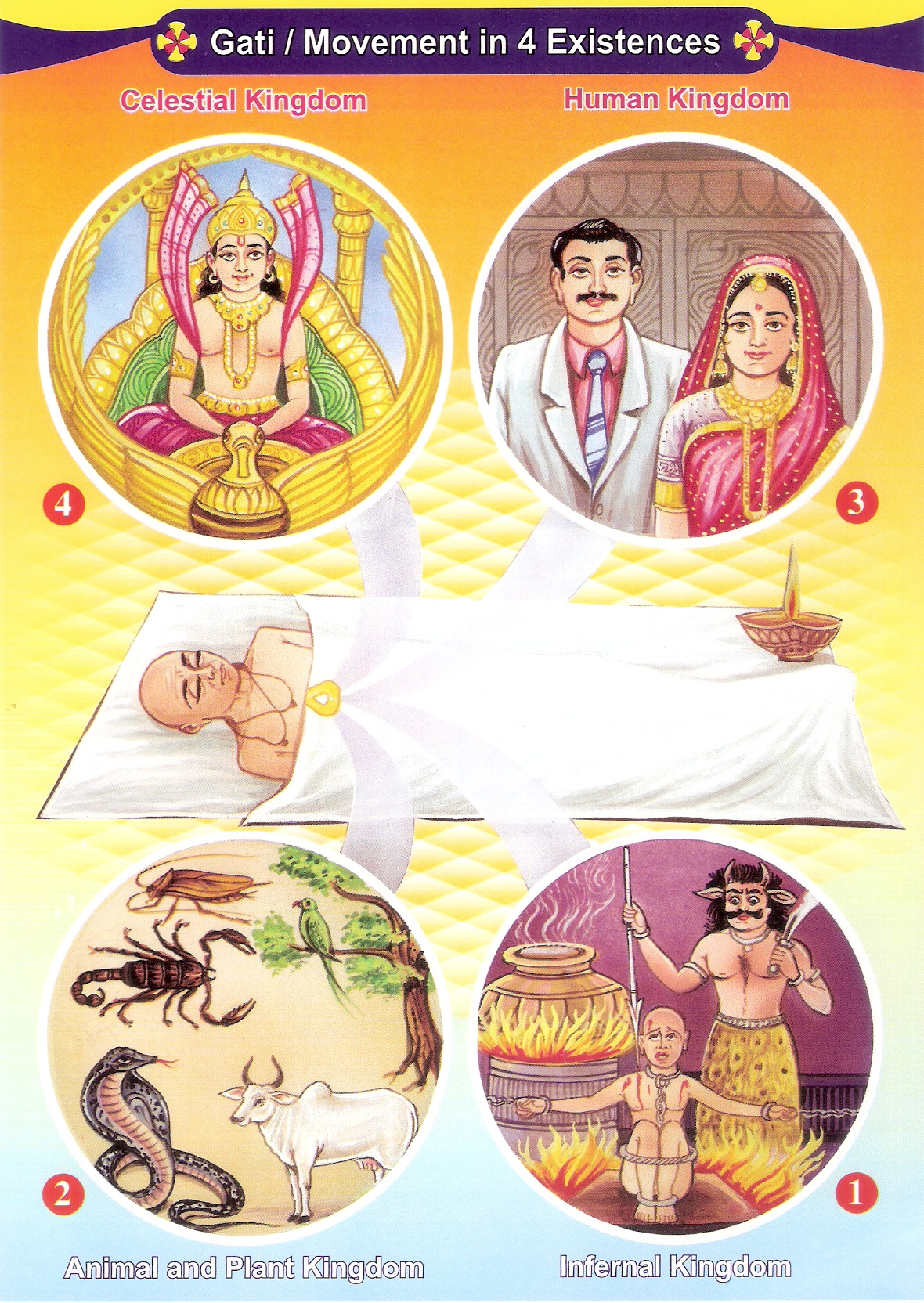|
Payasi
Pāyāsi or Paesi is a legendary king mentioned in the ancient Buddhist and Jain texts of India. In these legends, he appears as a materialist who orders several experiments to conclude that the soul does not exist. A Jain or Buddhist monk proves him wrong in a debate, and converts him to their faith. Legends According to Buddhist and Jain legends, Paesi ordered several cruel experiments to conclude that the soul does not exist. For example, he had a thief thrown alive in a brass pot, with a brass lid soldered over it, to see how his soul could escape after his death. Buddhist and Jain works mention similar accounts of other people conducting such experiments to deny the existence of soul. In all these accounts,a Buddhist or Jain monk defeats the person denying the existence of the soul in a debate. E.g. in Haribhadra's ''Samaraichcha Katha'' (''Samarditya Katha''), a man named Pingakesa states that a robber sentenced to death had been put in a sealed iron vessel, but no soul was ... [...More Info...] [...Related Items...] OR: [Wikipedia] [Google] [Baidu] |
Materialist
Materialism is a form of philosophical monism which holds matter to be the fundamental substance in nature, and all things, including mental states and consciousness, are results of material interactions. According to philosophical materialism, mind and consciousness are by-products or epiphenomena of material processes (such as the biochemistry of the human brain and nervous system), without which they cannot exist. This concept directly contrasts with idealism, where mind and consciousness are first-order realities to which matter is dependent while material interactions are secondary. Materialism is closely related to physicalism—the view that all that exists is ultimately physical. Philosophical physicalism has evolved from materialism with the theories of the physical sciences to incorporate more sophisticated notions of physicality than mere ordinary matter (e.g. spacetime, physical energies and forces, and dark matter). Thus, the term ''physicalism'' is preferred ove ... [...More Info...] [...Related Items...] OR: [Wikipedia] [Google] [Baidu] |
Buddhist Texts
Buddhist texts are those religious texts which belong to the Buddhist tradition. The earliest Buddhist texts were not committed to writing until some centuries after the death of Gautama Buddha. The oldest surviving Buddhist manuscripts are the Gandhāran Buddhist texts, found in Afghanistan and written in Gāndhārī, they date from the first century BCE to the third century CE. The first Buddhist texts were initially passed on orally by Buddhist monastics, but were later written down and composed as manuscripts in various Indo-Aryan languages (such as Pāli, Gāndhārī, and Buddhist Hybrid Sanskrit) and collected into various Buddhist Canons. These were then translated into other languages such as Buddhist Chinese (''fójiào hànyǔ'' 佛教漢語) and Classical Tibetan as Buddhism spread outside of India. Buddhist texts can be categorized in a number of ways. The Western terms "scripture" and "canonical" are applied to Buddhism in inconsistent ways by West ... [...More Info...] [...Related Items...] OR: [Wikipedia] [Google] [Baidu] |
Jain Texts
Jain literature (Sanskrit: जैन साहित्य) refers to the literature of the Jain religion. It is a vast and ancient literary tradition, which was initially transmitted orally. The oldest surviving material is contained in the canonical ''Jain Agamas,'' which are written in Ardhamagadhi, a Prakrit ( Middle-Indo Aryan) language. Various commentaries were written on these canonical texts by later Jain monks. Later works were also written in other languages, like Sanskrit and Maharashtri Prakrit. Jain literature is primarily divided between the canons of the ''Digambara'' and ''Śvētāmbara'' orders. These two main sects of Jainism do not always agree on which texts should be considered authoritative. More recent Jain literature has also been written in other languages, like Marathi, Tamil, Rajasthani, Dhundari, Marwari, Hindi, Gujarati, Kannada, Malayalam and more recently in English. Beliefs The Jain tradition believes that their religion is eternal, and the ... [...More Info...] [...Related Items...] OR: [Wikipedia] [Google] [Baidu] |
Soul
In many religious and philosophical traditions, there is a belief that a soul is "the immaterial aspect or essence of a human being". Etymology The Modern English noun ''soul'' is derived from Old English ''sāwol, sāwel''. The earliest attestations reported in the ''Oxford English Dictionary'' are from the 8th century. In King Alfred's translation of ''De Consolatione Philosophiae'', it is used to refer to the immaterial, spiritual, or thinking aspect of a person, as contrasted with the person's physical body; in the Vespasian Psalter 77.50, it means "life" or "animate existence". The Old English word is cognate with other historical Germanic terms for the same idea, including Old Frisian ''sēle, sēl'' (which could also mean "salvation", or "solemn oath"), Gothic ''saiwala'', Old High German ''sēula, sēla'', Old Saxon ''sēola'', and Old Norse ''sāla''. Present-day cognates include Dutch ''ziel'' and German ''Seele''. Religious views In Judaism and in some Christian d ... [...More Info...] [...Related Items...] OR: [Wikipedia] [Google] [Baidu] |
Afterlife
The afterlife (also referred to as life after death) is a purported existence in which the essential part of an individual's identity or their stream of consciousness continues to live after the death of their physical body. The surviving essential aspect varies between belief systems; it may be some partial element, or the entire soul or spirit of an individual, which carries with it and may confer personal identity or, on the contrary, nirvana. Belief in an afterlife is in contrast to the belief in oblivion after death. In some views, this continued existence takes place in a spiritual realm, while in others, the individual may be reborn into this world and begin the life cycle over again, likely with no memory of what they have done in the past. In this latter view, such rebirths and deaths may take place over and over again continuously until the individual gains entry to a spiritual realm or otherworld. Major views on the afterlife derive from religion, esotericism an ... [...More Info...] [...Related Items...] OR: [Wikipedia] [Google] [Baidu] |
Reincarnation
Reincarnation, also known as rebirth or transmigration, is the philosophical or religious concept that the non-physical essence of a living being begins a new life in a different physical form or body after biological death. Resurrection is a similar process hypothesized by some religions, in which a soul comes back to life in the same body. In most beliefs involving reincarnation, the soul is seen as immortal and the only thing that becomes perishable is the body. Upon death, the soul becomes transmigrated into a new infant (or animal) to live again. The term transmigration means passing of soul from one body to another after death. Reincarnation (''Punarjanma'') is a central tenet of the Indian religions such as Buddhism, Hinduism, Jainism, and Sikhism; as well as certain Paganist religious groups, although there are Hindu and Buddhist groups who do not believe in reincarnation, instead believing in an afterlife. In various forms, it occurs as an esoteric belief in many s ... [...More Info...] [...Related Items...] OR: [Wikipedia] [Google] [Baidu] |
Karma
Karma (; sa, कर्म}, ; pi, kamma, italic=yes) in Sanskrit means an action, work, or deed, and its effect or consequences. In Indian religions, the term more specifically refers to a principle of cause and effect, often descriptively called the principle of karma, wherein intent and actions of an individual (cause) influence the future of that individual (effect): Good intent and good deeds contribute to good karma and happier rebirths, while bad intent and bad deeds contribute to bad karma and bad rebirths. As per some scripture, there is no link of rebirths with karma. The concept of karma is closely associated with the idea of rebirth in many schools of Indian religions (particularly Hinduism, Buddhism, Jainism and Sikhism), as well as Taoism.Eva Wong, Taoism, Shambhala Publications, , pp. 193 In these schools, karma in the present affects one's future in the current life, as well as the nature and quality of future lives—one's '' saṃsāra''. This concept has ... [...More Info...] [...Related Items...] OR: [Wikipedia] [Google] [Baidu] |
Mahavira
Mahavira (Sanskrit: महावीर) also known as Vardhaman, was the 24th ''tirthankara'' (supreme preacher) of Jainism. He was the spiritual successor of the 23rd ''tirthankara'' Parshvanatha. Mahavira was born in the early part of the 6th century BCE into a royal Kshatriya Jain family in ancient India. His mother's name was Trishala and his father's name was Siddhartha. They were lay devotees of Parshvanatha. Mahavira abandoned all worldly possessions at the age of about 30 and left home in pursuit of spiritual awakening, becoming an ascetic. Mahavira practiced intense meditation and severe austerities for twelve and a half years, after which he attained '' Kevala Jnana'' (omniscience). He preached for 30 years and attained Moksha (liberation) in the 6th century BCE, although the year varies by sect. Historically, Mahavira, who revived and preached Jainism in ancient India, was an older contemporary of Gautama Buddha. Jains celebrate ''Mahavir Janma Kalyanak'' every ye ... [...More Info...] [...Related Items...] OR: [Wikipedia] [Google] [Baidu] |
Sanskrit
Sanskrit (; attributively , ; nominally , , ) is a classical language belonging to the Indo-Aryan branch of the Indo-European languages. It arose in South Asia after its predecessor languages had diffused there from the northwest in the late Bronze Age. Sanskrit is the sacred language of Hinduism, the language of classical Hindu philosophy, and of historical texts of Buddhism and Jainism. It was a link language in ancient and medieval South Asia, and upon transmission of Hindu and Buddhist culture to Southeast Asia, East Asia and Central Asia in the early medieval era, it became a language of religion and high culture, and of the political elites in some of these regions. As a result, Sanskrit had a lasting impact on the languages of South Asia, Southeast Asia and East Asia, especially in their formal and learned vocabularies. Sanskrit generally connotes several Old Indo-Aryan language varieties. The most archaic of these is the Vedic Sanskrit found in the Rig Veda, a colle ... [...More Info...] [...Related Items...] OR: [Wikipedia] [Google] [Baidu] |
Shravasti
Shravasti ( sa, श्रावस्ती, translit=Śrāvastī; pi, 𑀲𑀸𑀯𑀢𑁆𑀣𑀻, translit=Sāvatthī) is a city and district headquarter of Shravasti district in Indian State of Uttar Pradesh. It was the capital of the ancient Indian kingdom of Kosala and the place where the Buddha lived most after his enlightenment. It is near the Rapti river in the northeastern part of Uttar Pradesh India, close to the Nepalese border. Sravasti is one of the most revered sites in Buddhism. It is believed to be where the Buddha taught many of his ''Suttas'' (sermons), converted many of his famous disciples, and performed his "Sravasti miracles" – "great miracle" and "twin miracle" – a subject of numerous historic reliefs, statues and literature in Buddhism. Sravasti is also important to Hinduism and Jainism. The earliest manuscripts of both mention it and weave some of their legends in Sravasti. Archaeological excavations of the Sravasti site have unearthed numerous ... [...More Info...] [...Related Items...] OR: [Wikipedia] [Google] [Baidu] |
Digha Nikaya
Digha is a seaside resort town in the state of West Bengal, India. It lies in Purba Medinipur district and at the northern end of the Bay of Bengal. It has a low gradient with a shallow sand beach. It is a popular sea resort in West Bengal. History Originally, there was a place called ''Beerkul'', where Digha lies today. This name was referred in Warren Hastings's letters (1780) as Brighton of the East. An English businessman John Frank Snaith started living here in 1923 and his writings provided a good exposure to this place. He convinced West Bengal Chief Minister Bidhan Chandra Roy to develop this place to be a beach resort. An old church can be seen near the Old Digha Main gate. This place is also known as Alankarpur Digha. A new mission has been developed in New Digha which is known as Sindhur Tara which is beside Amrabati Park its a Church where it is possible to wish for the welfare of family and loved ones. The best way to visit is to book a local van rickshaw. There ar ... [...More Info...] [...Related Items...] OR: [Wikipedia] [Google] [Baidu] |







.png)

